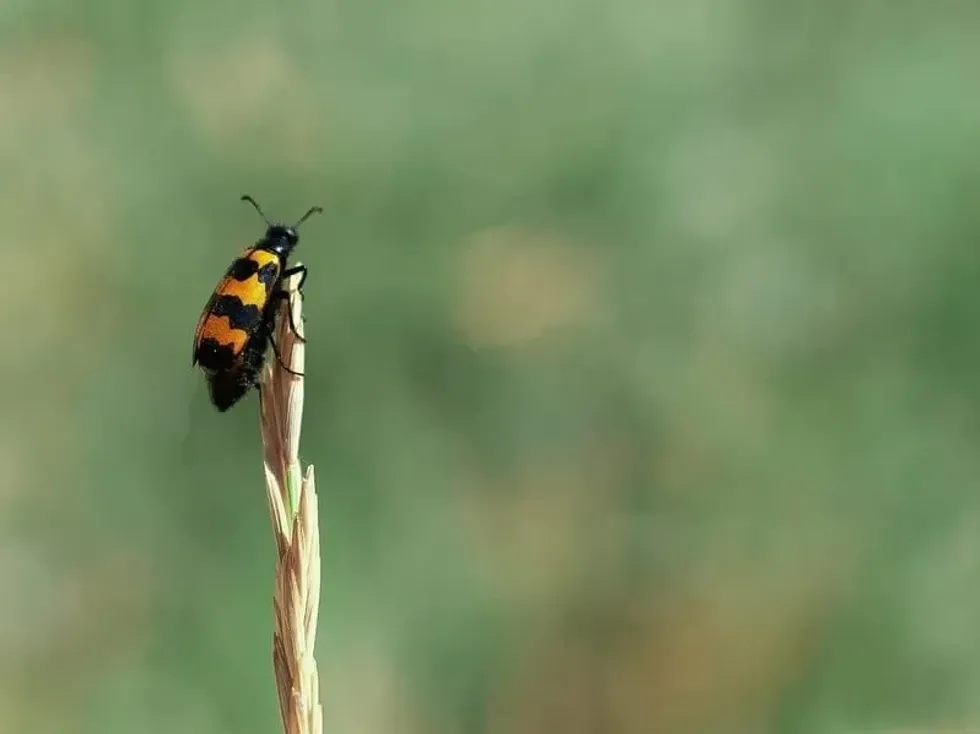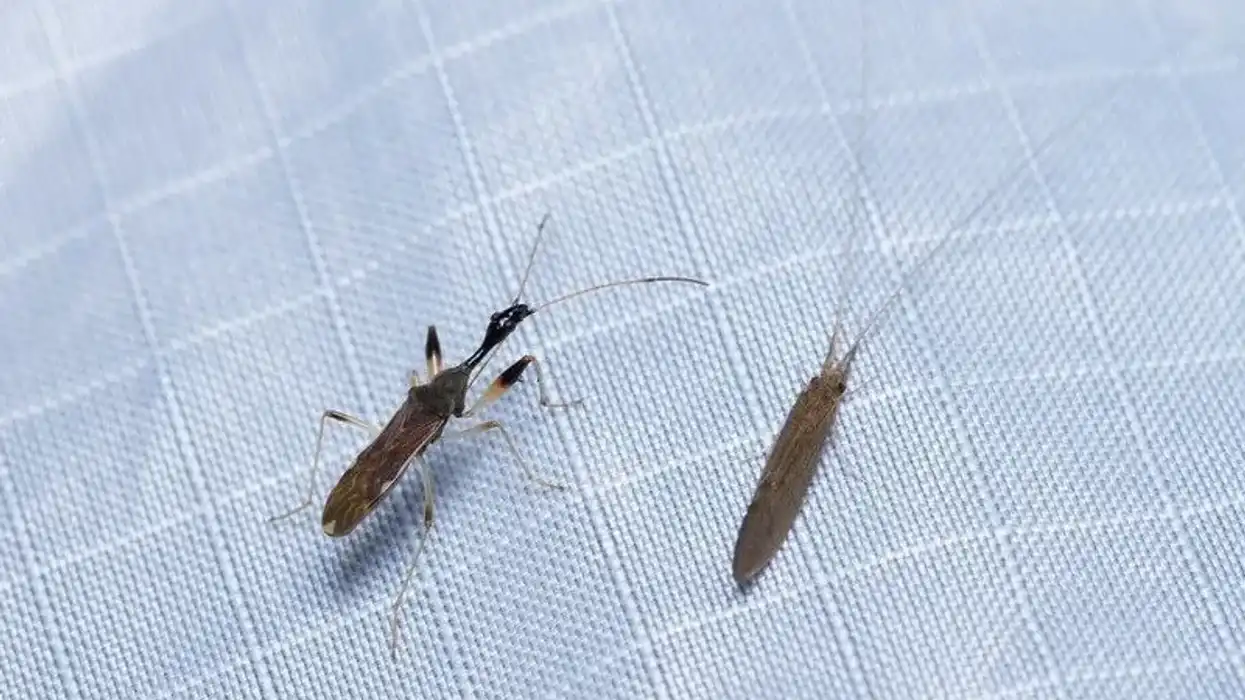The American burying beetle (Nicrophorus americanus) from the carrion beetle group of Silphidae is one of the rarest species of beetle insects that can be found across various parts of America, mainly in regions like Rhode Island, Alaska, and along the West Coast and East Coast.
This, however, wasn't always the case as these carrion beetles were also found on a large scale in places like Canada around 50 years ago.
Throughout the years, mainly due to the loss of habitat and the fragmentation of these beetles, the American burying beetle population has significantly dropped and these creatures are currently listed as Critically Endangered by the IUCN.
American burying beetles happen to be one of the most beautiful beetle species to be found in the wild and can be identified easily due to their distinct shiny black wings with orange-red bands. American burying beetles also do not really carry diseases and the existence of this beetle species is very important for the ecosystem.
Continue reading to learn more about the American. burying beetle. Be sure to check out some more interesting facts about the weevil beetle, or the darkling beetle.
American Burying Beetle Interesting Facts
What type of animal is an American burying beetle?
This American burying beetle species happens to be carrion beetles by nature. This means that this species of beetles are seen feeding on the carcass of dead animals or birds.
What class of animal does an American burying beetle belong to?
American burying beetles belong to the animal class of Insecta.
How many American burying beetles are there in the world?
The population of American burying beetles has significantly decreased during the last 50 years. The main reason contributing to the low range of the population of this endangered species is considered to be the loss of their habitat.
Fragmentation for the purpose of reproduction is also another reason attributing to the plummet of this beetle species' population range. It is estimated that there are less than 1000 beetles of this species currently inhabiting parts of America.
Where does an American burying beetle live?
American burying beetles can be found in various places across America, however, the beetle population of this species is fairly limited and depends majorly on various factors such as a suitable habitat, lack of predators, and carrion availability. This endangered insect can be found in places like Rhode Island, Alaska, Block Island, and parts of eastern Oklahoma.
What is an American burying beetle's habitat?
American burying beetles choose their habitat depending on carrion availability for this endangered species of insect to feed on and multiply. The American burying beetle habitat consists of grass plains, tundra regions, savannahs, and forest regions where there might exist carcasses of dead animals or birds.
It is also known to occur in hickory forests across various regions in America and can be seen dwelling in oak-hickory trees.
Who do American burying beetles live with?
Burying beetles are seen living by themselves unless they find a carcass of a dead animal. In the presence of a big enough carrion, these beetles copulate if another beetle of the opposite gender approaches.
How long does an American burying beetle live?
The American burying beetle life cycle does not usually last any longer than one year.
How do they reproduce?
The process of reproduction of this endangered species happens to be very unique and also really interesting.
These beetles have really powerful antennas on the top of their head that help them to find food miles away. Beetles of both sexes usually arrive at the carcass of dead animals by using their strong antennas and the process of reproduction begins then and there itself.
However, if a male arrives before a female, they usually wait on top of the carcass while releasing pheromones in order to attract females.
Once male and female beetles arrive at the carcass, they start working with each other in order to excavate and bury the carcass a few inches deep into the ground. The beetles nibble out the excess soil and roots in order to make space for the carcass.
After this, the beetles copulate and over a period of time, the female lays around 20-30 eggs inside a chamber in the animal carrion.
The larvae start coming out of the eggs within a few days itself and start feeding themselves on the remains of the dead animal, along with their parents. However, these beetles don't really receive any parental care and usually, the parents leave as soon as the larvae become big enough to feed themselves.
Eventually, the larvae grow into young beetles and are ready to face the wild on their own.
What is their conservation status?
The American burying beetle has become a highly endangered species mainly due to habitat loss and fragmentation. Currently, the IUCN lists the status of these beetles to be in the range of Critically Endangered.
American Burying Beetle Fun Facts
What do American burying beetles look like?
Nicrophorus americanus or as we more commonly know them, American beetles, happen to be really beautiful and unique creatures.
These insects have very powerful antennas on top of their strong shielded heads which help them to track food from miles away. They also have really shiny black wings and on their wing covers, they have really beautiful orange-red bands which makes this beetle more unique and identifiable compared to other species beetles.
This species of beetles happen to be carrion dwellers and can be seen burying dead animals in the wild.
How cute are they?
These beetles are really unique and beautiful but they fall short on the beauty range when compared with insects like the Christmas beetle or the atlas beetle.
How do they communicate?
The beetles of this endangered species typically resort to the releasing of chemicals for the purpose of communication. Males of this species can be seen releasing pheromones in order to attract the females of this species.
How big is an American burying beetle?
This burying beetle is not very large in size and is seen to be around 1-1.7 in (2.5-4.5 cm) long. The size of this species of beetles is almost the same as the size of common ground beetles.
How fast can American burying beetles move?
There isn't much information available about the speed of this endangered species of beetles. However, these insects, like most other beetles, can be assumed to be pretty slow mainly because of their hard and heavy exoskeleton.
How much does an American burying beetle weigh?
The weight of this endangered species of beetle typically depends on how much food they have available. Generally, young beetles can weigh around 2 oz (55 g).
What are the male and female names of the species?
Male and female American burying beetles do not have any specific names.
What would you call a baby American burying beetle?
Baby beetles are called larvae.
What do they eat?
The American burying beetle diet consists of carrions of dead animals since they happen to be scavengers by nature. They are also seen eating leaves and vegetation and in some very rare instances, they can be seen eating small insects too.
Are they poisonous?
No, this endangered beetle isn't poisonous.
Would they make a good pet?
Beetles don't really make good pets, however, the bodies of dead beetles are often preserved and made a part of insect collections.
Did you know...
Due to the process of fragmentation, these beetles often leave their habitat in search of carcasses of animals to feed on and multiply themselves.
Due to this process not occurring properly, mainly because of reasons such as the interference of predators like the American kestrel, the status of these beetles has changed from threatened to endangered in the last 50 years.
How did the American burying beetle get its name?
The American burying beetle's scientific name consists of two parts which are 'Nicrophorus' and 'Americanus', the first part represents their scavenger range and their habit of excavating while the second part represents their origin.
Why is the American burying beetle important?
This beetle happens to be important for controlling the positive status of their habitat. They usually excavate and bury the remains of dead animals which eventually decomposes and helps maintain the balance of the ecosystem.
Here at Kidadl, we have carefully created lots of interesting family-friendly animal facts for everyone to discover! Learn more about some other insects from our blister beetle facts and stick bug facts pages.
You can even occupy yourself at home by coloring in one of our free printable American burying beetle coloring pages.










